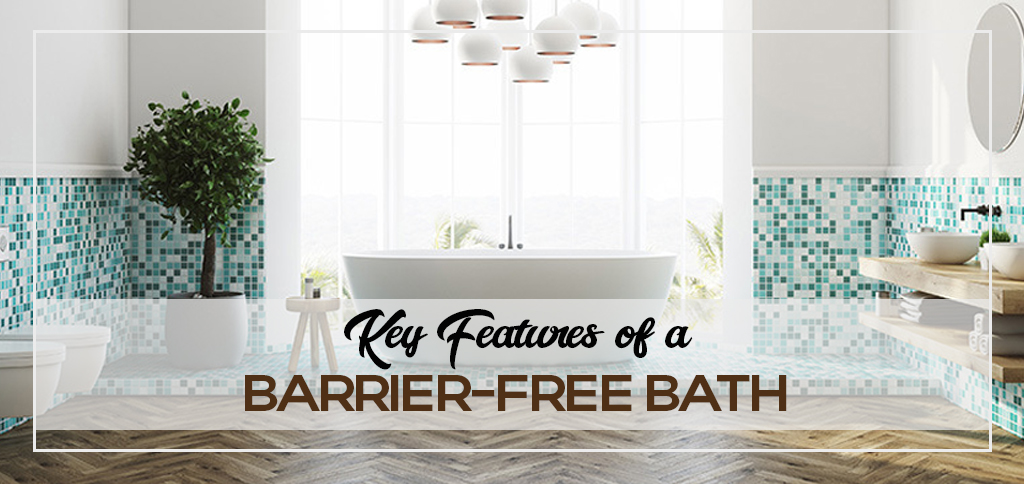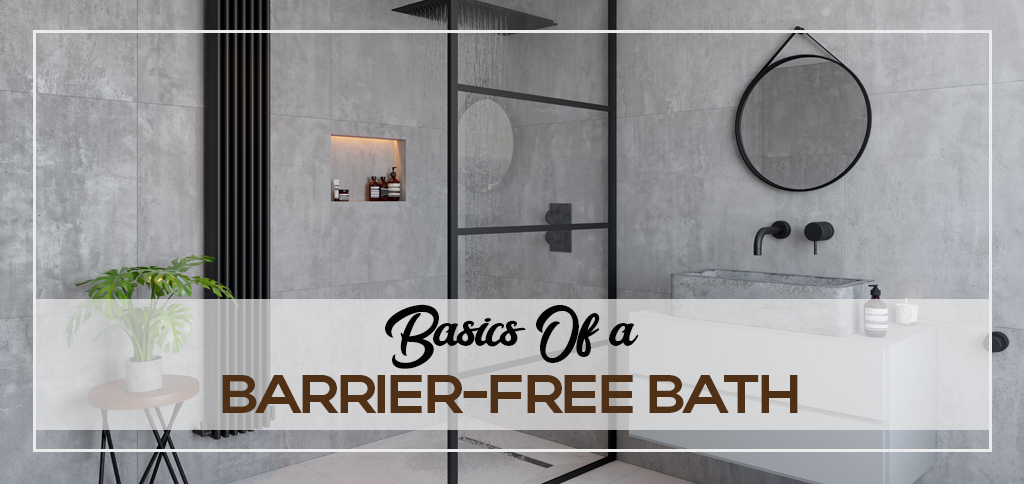Barrier-free baths have become a necessity in our daily lives. They make life easier and more accessible for people with disabilities or the elderly, just like magic. They also help to save money and are the best investment for the future.
It is specifically designed to create an accessible bathroom environment where everyone can use it safely and comfortably without any barriers. Due to the increase in falling incidents, people seek obstacle-free bathrooms where everyone can safely navigate and move around.
Let’s delve into the nitty gritty basics of a barrier-free bath, which allows you more independence in your home.
Design considerations
The barrier-free design allows people to move around comfortably without fear of tripping or falling. It ensures everyone independently takes care of their hygiene to increase the quality of life. It’s important to take the following design considerations for a barrier-free bathroom:
Easy manoeuvrability layout:
The bathroom layout should be more inclusive and welcoming for special needs and provide easy manoeuvrability. While designing, install open floor plans, wider pathways, lever-type doors, low mirrors, lever-type faucet handles, grab bars, accessible toilets, walk-in showers, accessible wash basins, and slip-resistant floor plans.
Everything must be measured in a way that is easily accessible from a sitting position.
Key features of a barrier-free bath
If you plan to make your bathroom barrier-free, Let’s explore some key features that are accessible, convenient, and pleasing to the eye.

- Grab bar or Handrail: While making your bathroom accessible, it is important to install grab bars or handrails for stability and support. They should be installed strategically in proper placement, such as near the toilet, shower area, or bathtub, for more balance or accessibility.
- Shower Area: For more accessibility, replace your bathtub with a walk-in shower, roll-in shower, or shower seat. These are all good options for people with disabilities who want to shower independently and maintain their hygiene.
- Toilet consideration: In the barrier-free bathroom, it’s crucial to install comfortable toilets for individuals with mobility issues. Make sure to install the grab bars for safety and balance to ensure sitting down and standing up without the fear of tripping or falling.
Sink and vanity Accessibility
Regarding sink and vanity accessibility, consider the following factors to ensure safety and comfort.
Height:
Install the sink and vanity at an appropriate height to accommodate wheelchair users. The height should be lower than standard to allow easy access to the sink while seated.
Adjustable mirror placements:
Install adjustable mirror placements so individuals with varying heights and abilities can easily see themselves using the sink.
Hands-free faucet control:
Install hands-free faucet controls to ensure people with disabilities, especially those with limited hand dexterity, can easily control the water flow without any manual operating system.
Safety and comfort features
Safety and comfort are necessary when installing accessible features in the bathroom. Look at some safety and comfort features to enhance accessibility and convenience with functionality.
Temperature control
Safety is paramount, so temperature control features such as thermostatic shower valves should be installed. These valves help individuals adjust water temperatures according to their requirements.
Anti-scald valves
Anti-scald valves are accessible features that help to regulate the water temperature. This allows individuals to shower easily without the risk of burns from too hot water.
Adequate lighting
Lightning is a helpful and necessary feature, especially for those with visibility issues. Install adequate lighting in the proper place, such as light sensors or automatic lighting, to provide ample illumination.
Non-glare surfaces
Non-glare surfaces, also known as matte finishes on tiles and countertops, boost safety and make the bathroom more stylish and modern. If tiles are slippery, there is an increased risk of slip-and-fall accidents.
Emergency call systems
Installing emergency call systems inside the bathroom is cost-effective and easy. They are designed to alert people that someone in the bathroom is in danger and needs assistance. This increases the safety and convenience of people with different disabilities.
Technological Enhancements and Assistive Devices
Technological advancements and assistive devices play a vital role in barrier-free baths. Incorporating these technologies and devices helps people with disabilities easily carry out daily tasks and makes your bathroom safer. Here, we discuss some portable technologies that are paramount for your clear understanding.

- You can install smart grab bars with motion sensors or LED lights in the bathroom for safety and easy navigation. They provide extra support and lighting.
- Many mobility devices, such as wheelchairs, crutches, tricycles, and portable commode chairs, assist people in navigating and moving around independently to maintain hygiene.
- Smart showerheads are smart technology that provides consistent water flow and temperatures. They are sleek and stylish and give freedom for a safe bathing experience.
Regulations and Standards
Follow the building codes and ADA guidelines to ensure comfortable access when designing a barrier-free bathroom. The ADA guidelines cover many factors, including handrails and grab bars, toilet placements, smart showerhead placements, vanity placement, wide openings for walkers or wheelchair users, and so on. They allow people to navigate and give equal access to all people easily.
Remember that Local building codes vary between states; it’s important to comply with these codes and create a safer and more accessible barrier-free bathroom.
Conclusion
Barrier-free baths are important in creating a functional space and increasing self-confidence in people with disabilities. Incorporating accessible features such as grab bars, roll-in showers, and adjustable height fixtures makes bathing comfortable and easier.
Greater Toronto Accessibility understands all the ins and outs of creating a barrier-free bath. We are here to create accessible and safe places for everyone. We create barrier-free spaces to accommodate people who suffer from different challenges in daily life.
Contact us now and schedule a meeting to design a safe, secure space tailored to your needs and preferences.

